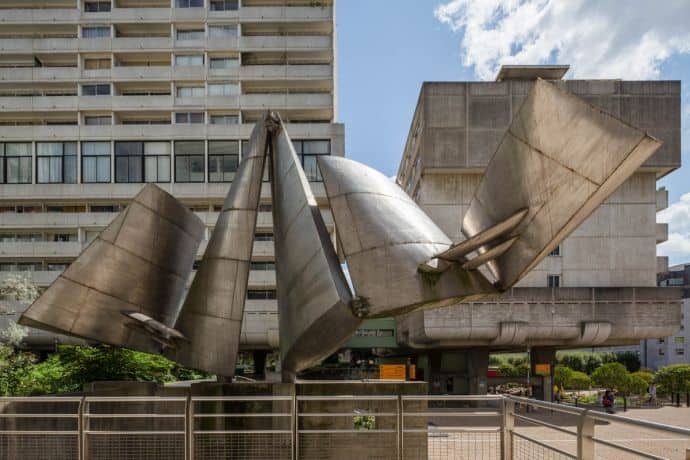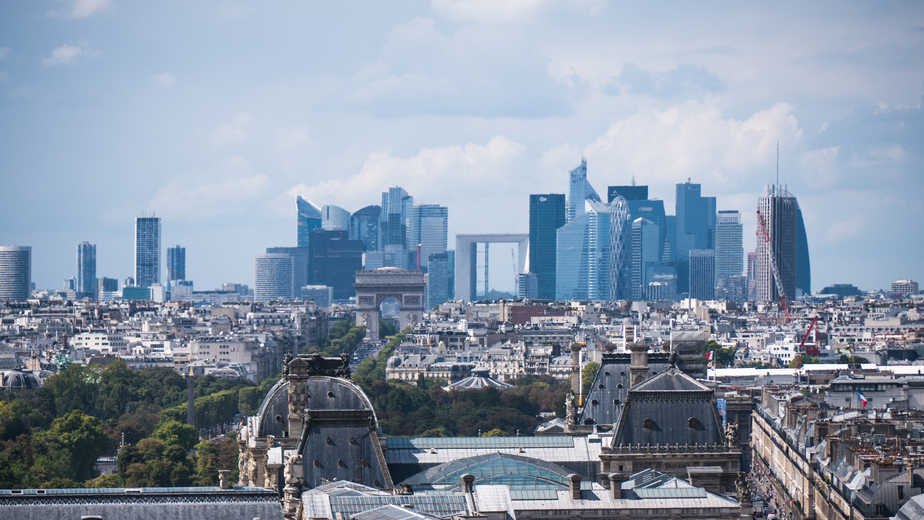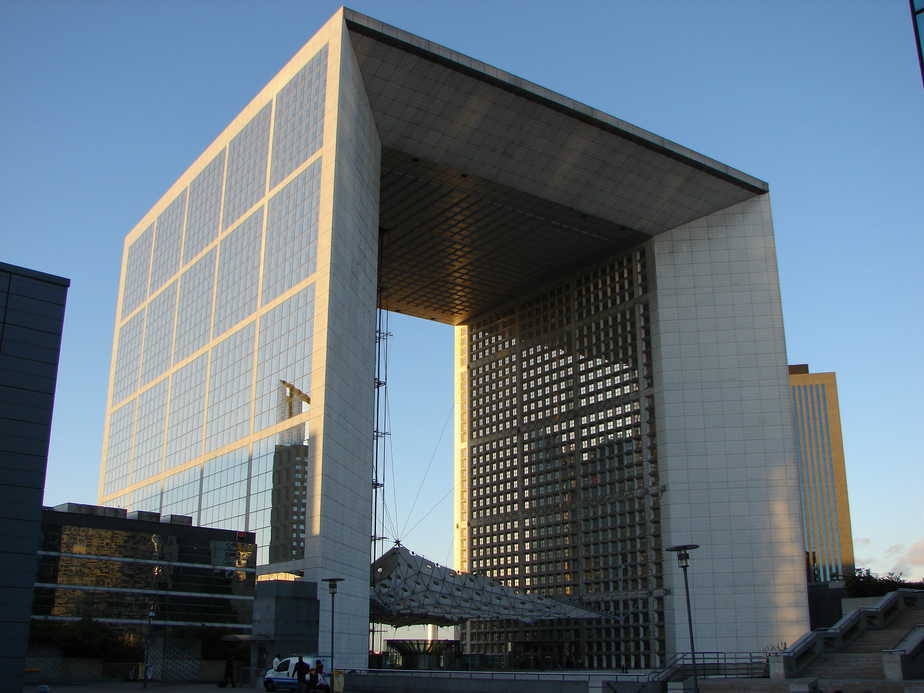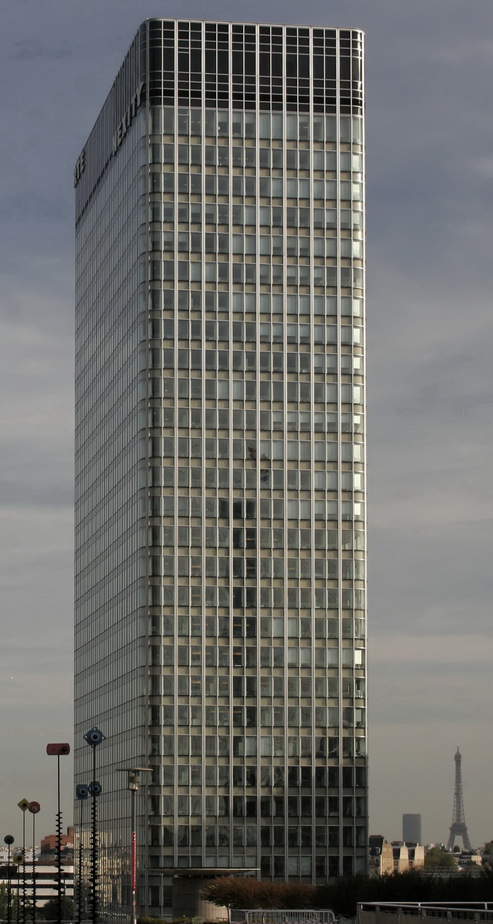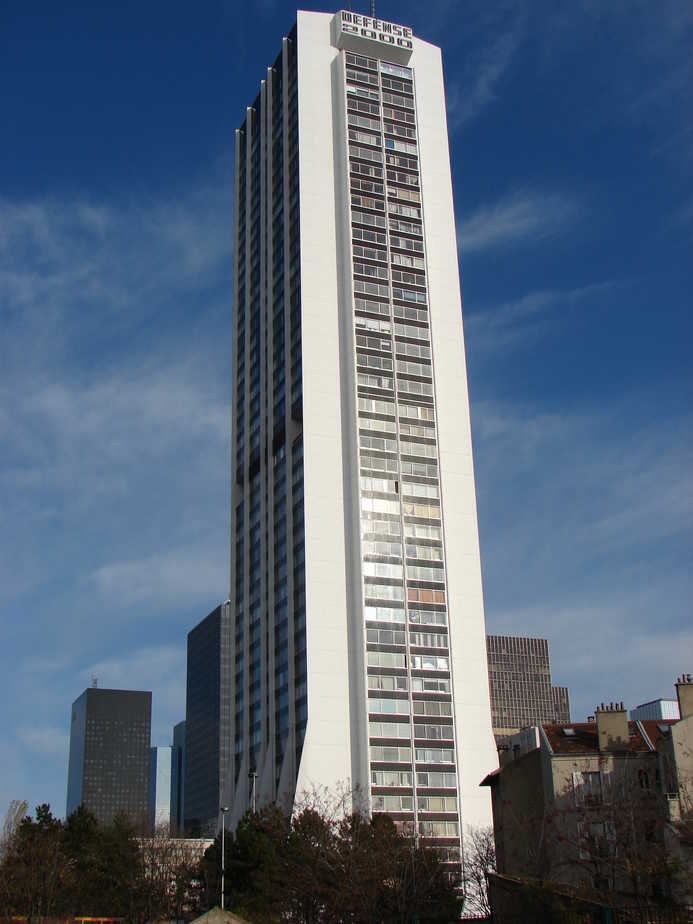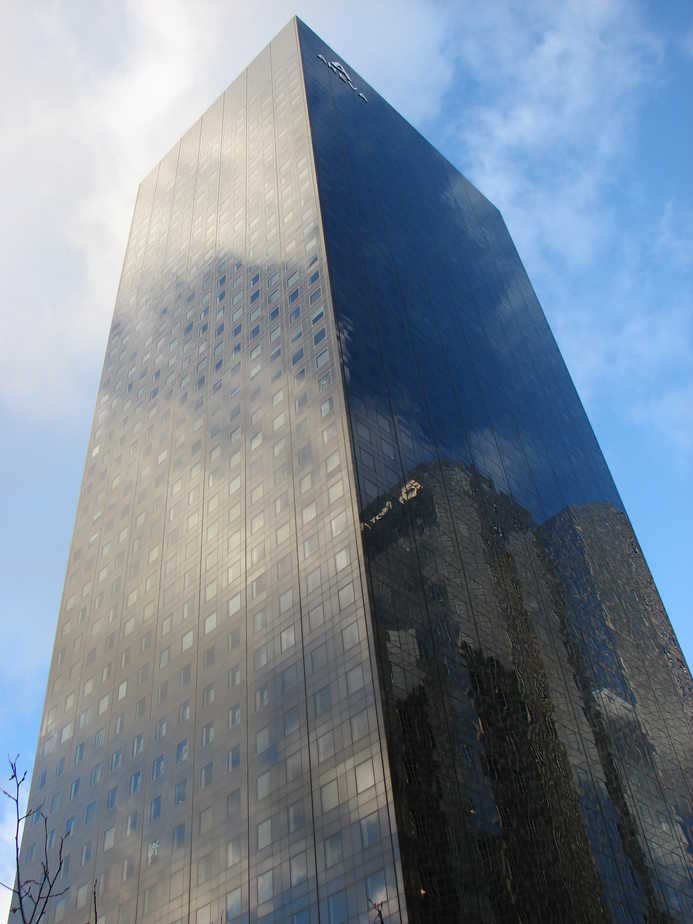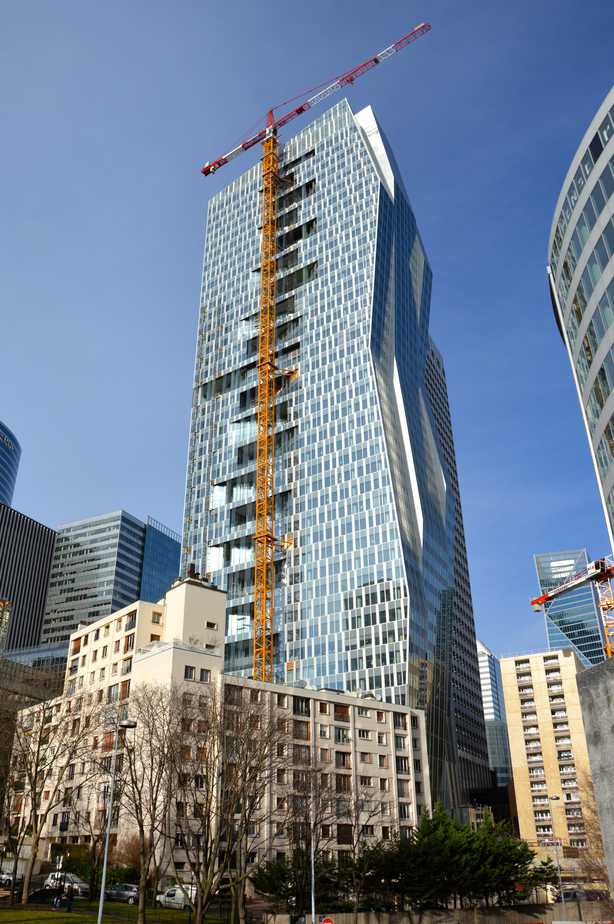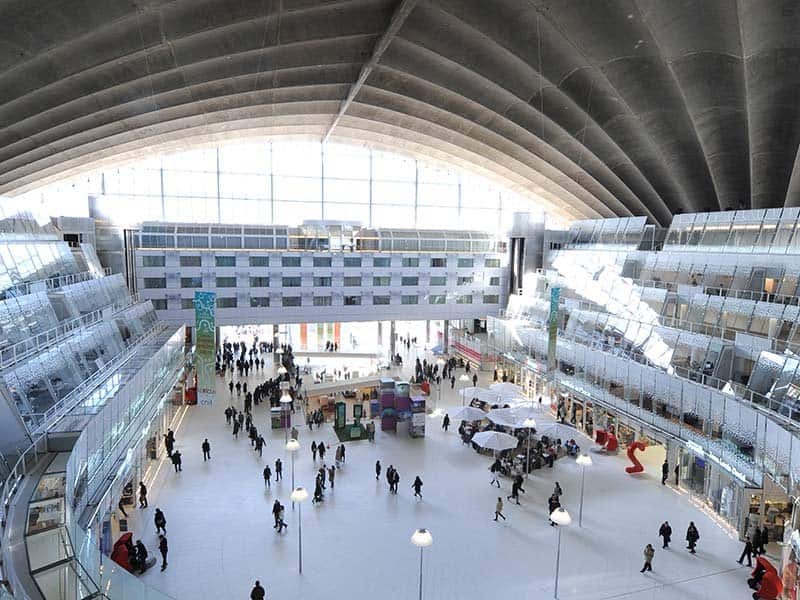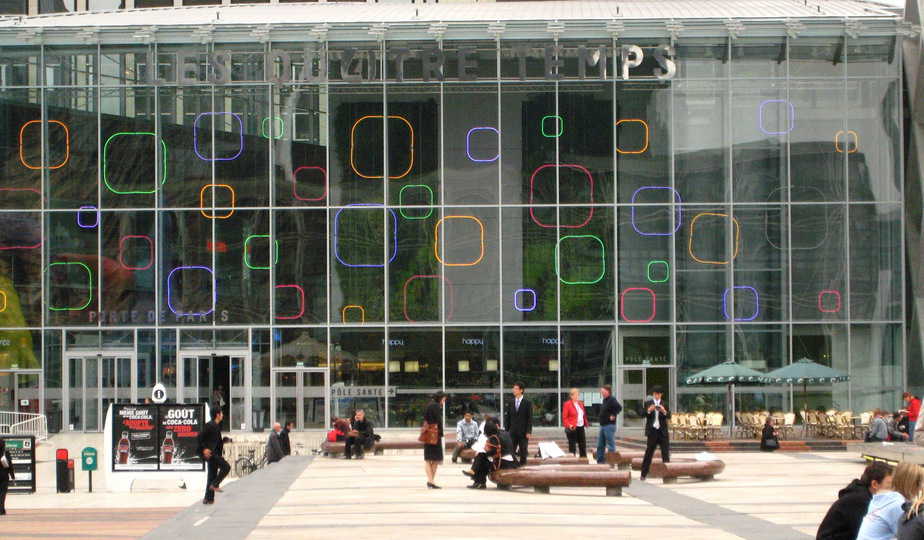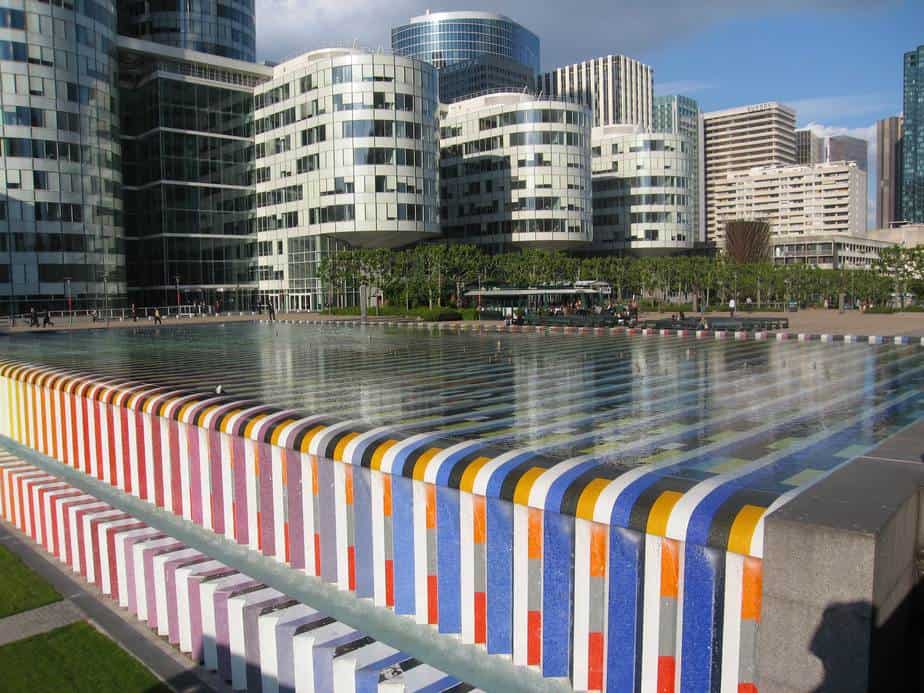5 Things to See in La Defense
Paris is world-famous for the beauty of its historical center. But it is not only the city of the past but also the city of the present, the dynamic capital of the sixth biggest economy in the world. This modernity is best exemplified in its business district: La Defense.
Unlike many big cities in the world, Paris’s business district is not located in its center but in its suburbs. The authorities wanted to preserve the homogeneity of the center of Paris. Thus, they chose a territory at the crossing of four cities of the western suburb: Nanterre, Puteaux, Courbevoie and La Garenne-Colombes.
The name La Defense is a reference to a nineteenth century statue commemorating the defense of Paris during a war in 1870.
Before the fifties, you had only pavilions, warehouses and little workshops there.
Today this business center is the biggest in Europe at 160 hectares. It is the workplace of around 180 000 workers. They work for 2 500 companies, including the biggest ones of the country.
For me, it is more than a workplace. It bears the testimony of the dream of prosperity made in a recent past. It can also be seen as an open-air museum of modern architecture. This is a lively district where many Parisians work and live, embellished by contemporary art.
Let me show you five things to see in La Defense !
1. The Arche de la Défense
Being 110 meters tall and 112 meters deep, this arch could contain the entire Notre-Dame cathedral !
This monument cannot be understood without a reference to two others Parisian arches: the Arc du Carousel and the Arc de l’Étoile, known in English as the Arc of Triumph.
These two arches were commissioned by Napoleon in the early 19th century to imitate the arch of triumph built by the Romans.
They are located on the extremities of the “historical line” of Paris, that starts with the Louvre, goes through the Tuileries Garden and the Champs-Élysées. This line is originally the path going from the Tuileries, the Parisian palace of the king to the castle of Saint-Germain-en-Laye in the countryside.
The arch of La Defense also had a symbolic meaning. The new business was continuing a history which began in the 17th century and completed in the following centuries, like a chain in time and space.
A Danish architect, Johan-Otto Von Spreckelsen, and the French president who commissioned it, François Mitterrand, wanted a monument dedicated to fraternity. This official name is La Grande Arche de la Fraternité, even though few people know it and even fewer use this name.
This open cube can be read like a window open to the world and open to the Other. Like every big monument of contemporary art, it sparked some controversies at its beginning.
1 Parvis de la Defense, 92 800 Puteaux
2. The Towers
In the inner city of Paris, the size of the building is limited by the law and by the resistance of the Parisians to anything massive in the old city. There are a few exceptions like the Montparnasse tower but they have been very controversial and were not imitated.
You will have to go to La Defense to enjoy the modern skyscrapers. If this urban landscape reminds you another place, it is normal: it has been nicknamed “Manhattan on the river Seine”.
Below are the main towers of La Defense, based on their historical importance or their singular look.
Tour Initiale
This 105 m tall tower built in 1966 is one of the first skyscrapers of the Defense. It was made in only six weeks !
It was inspired by a tower of Park Avenue in New York: the Lever House. Despite being built only a decade before most of the other towers, it has an old style that brings some diversity.
1, terrasse Bellini, 92800 Puteaux
Tour Defense 2000
This one is original for its function: it is not an office tower but a residential tower.
Inspired by the Chase Tower of Chicago, this tower was delivered in 1974. For a long time, it was the highest residential tower of Europe but was beaten in 2010 by the Capital City in Moscow.
This tower did not meet a big success in the beginning and had problems to find inhabitants.
It shows you the difference of taste between the architects of that time and the majority of the French. This is supported by Le Corbusier’s theory, that people wanted everything big in the 60s and 70s whereas most French had, and still have today, a taste for what is smaller and more picturesque.
23 rue Louis-Pouey, 92 800 Puteaux
Tour Chartis
This tower stands out by its colour. Built in white concrete, with windows covering only 40% of its façade, it got the nickname of the “White Tower”.
34, place des Corolles, 92400 Courbevoie
Tour Areva
This black tower, 178 m tall, was designed by an architecture firm from New York in the 70s.
The balance of the building does not rest on its core but on its façade: the windows get bigger at every floor.
I find it very elegant with its dark granite facing and its stained glasses.
1, place de la Coupole-Jean-Millier, 92400 Courbevoie
Tour Majunga
This tower is among the most recent ones: it was inaugurated in 2014. It is characteristic of the towers of the last generation which have some more original designs.
Apart from the originality of the façade, the Majunga tower is also the first tower in France to have a balcony at every floor and several gardens inside. It is designed to let in a maximum of natural light at every floor.
10 rue Delarivière-Lefoullon, 92 800 Puteaux
3. The CNIT
This building has a strong symbolic importance for the district.
Built in 1958, it marked the birth of the new area. CNIT is the acronym of ‘Centre National de l’Industrie et des Techniques’ and it was conceived as an exhibition hall.
This architecture was very modern at the time when it was built. Three architects collaborated on it: Robert Camelot, Jean de Mailly, Bernard Zehrfuss. They had each and separately won a prestigious French contest, the ‘Price of Rome’.
The CNIT is among the buildings built on the “dalle” of La Defense. It is a concrete slab that supports the building of the surface while beneath it hides a motorway, the train and metro lines that connect La Defense with Paris and the rest of the suburbs.
Today it is used by many boutiques as part of the nearby mall: Westfield Les Quatre Temps.
2, parvis de la Défense, 92800 Puteaux
4. The mall: Westfield les Quatre Temps
This mall is the most visited in France: in 2016, it welcomed 49 million visitors. It is also the first one by its revenue and the second biggest by the size of the building, containing four levels.
With 222 boutiques, 46 restaurants and a big movie theater, this recently renovated mall is attracting not only the businessmen of La Defense but also the whole western suburbs of Paris.
The malls are often despised by thinkers who see them as temples of consumption. But if you set aside judgment about capitalism and modern economy, the malls are very interesting from a sociological perspective.
In les Quatre Temps, you can see what and where real Parisians buy, away from the tourists traps or the unaffordable fashion boutiques of the center.
15 parvis de la Défense, 92092 Puteaux
5. The Artwork
This area made of iron, glass and concrete could look austere if it was not embellished by some contemporary art pieces. They bring some fantasy to this temple of business.
Here is a short selection.
The Agam Fountain
In the center of La Defense, between the buildings and in the perspective of the historical line of Paris, there is a vast esplanade. The Israeli artist Yaacov Agam adorned it with a monumental fountain in 1975.
It is a massive rectangular basin: 86 metres wide and 26 metres long. It is decorated with a mosaic in enamels from Venice with many different colours.
Esplanade du Général-de-Gaulle, 92400 Courbevoie, 92800 Puteaux
The Mechanical Bird
In 1972, the Greek sculptor Philolaos did a strange and beautiful statue in stainless steel reflecting the sunlight. He called it L’Oiseau mécanique, which means the Mechanical Bird.
Note that Philolaos produced two others art pieces in La Defense: Cheminées (Chimneys) and Nympheas (Waterlilies).
Terrasse des reflets, 92400 Courbevoie
I hope I showed you that La Defense, far from being only a functional district, deserves to be visited. If you stay in the west of Paris, why not get in contact to ask one of our guides to show you around ?
Planning a trip to Paris ? Get ready !
These are Amazon’s best-selling travel products that you may need for coming to Paris.
Bookstore
- The best travel book : Rick Steves – Paris 2023 – Learn more here
- Fodor’s Paris 2024 – Learn more here
Travel Gear
- Venture Pal Lightweight Backpack – Learn more here
- Samsonite Winfield 2 28″ Luggage – Learn more here
- Swig Savvy’s Stainless Steel Insulated Water Bottle – Learn more here
Check Amazon’s best-seller list for the most popular travel accessories. We sometimes read this list just to find out what new travel products people are buying.

